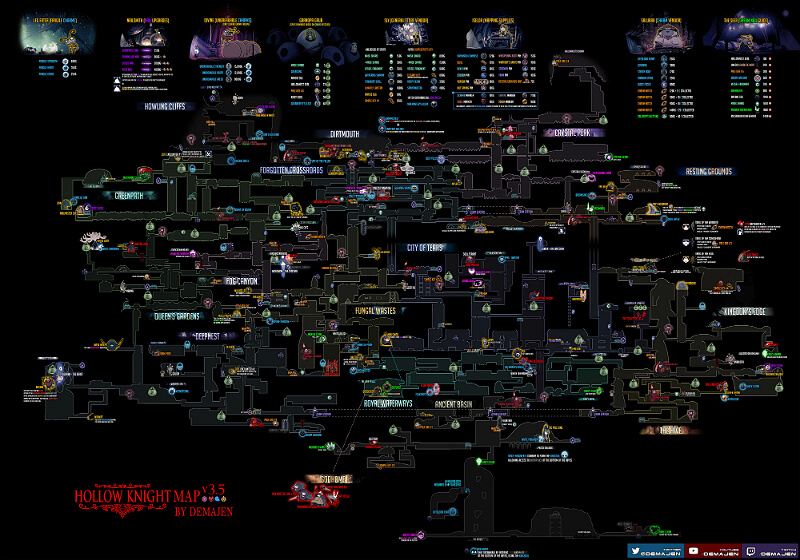
As in Castlevania, their ammo count is based on a mana meter that must be restored through exploration and killing enemies. These weapon options shamelessly lift from the Castlevania series and include exploding bottles, tossable axes (which rise and fall in an arc), and throwing daggers, along with the more Zelda-like ability to dash into and tackle baddies.
#MAP OF HOLLOW KNIGHT UPGRADE#
(Also, as in Zelda II, each time you upgrade a meter, its next upgrade is more expensive, which may delay your progress if you want to go all-in on, say, attack power.) Instead, progress is more like that in Zelda II: The Adventure of Link, where players pick which basic meters (damage, health, armor, etc.) to expand as they rack up experience points.

Beat all of these levels to face a final challenge while getting stronger as you play.īut Mina the Hollower eschews the idea of an inventory that lets the hero solve puzzles and explore new zones along the way. The basic concept sounds pretty Zelda-like: Start from a central "hub" as a lowly, average adventurer (in this case, a timid mouse named Mina), then explore roughly eight zones in 2D, top-down fashion each contains "overworld" and "dungeon" elements.


As a result, Yacht Club's design philosophies veer from Link's Awakening to make this new game more of an action-first exploration game and less of a backtrack-heavy, "seek action" adventure. Still, Mina the Hollower's world gameplay premiere at PAX West included an element I wasn't suspecting: a healthy dose of NES-era Castlevania.


 0 kommentar(er)
0 kommentar(er)
